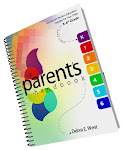What are teachers' qualifications, and how do they interact with students?
By Kay Johnson, Linda Broatch, M.A
Teaching is an interactive process. Or, as Rick Perkins, Instructional Leader at FLVS puts it: "Curriculum doesn't teach itself. Students still need the guidance of an instructor." In high-quality online schools teacher-directed instruction plays an important role. Regular student-teacher and parent-teacher check-ins are required, and students can contact teachers as needed. Timeliness of teacher response to students is also important. The rule of thumb at FLVS, Perkins says, is to return assignments within 48 hours and to respond to questions within 24 hours.
This one-on-one relationship with a teacher has potential benefits for kids with learning difficulties. "Sometimes in a regular classroom," says Kay Johnson, "those quiet students are the ones who have learning difficulties, and regular contact can bring those to a teacher's awareness." Individualization of instruction is also possible. "It's often said that every student has a front row seat in online learning," Johnson says, "and it's true; teachers can individualize instruction in ways that just aren't possible in a classroom of 30 students."
"We're essentially teaching for mastery," she adds. "That includes repetition of important content; many instructional approaches for learning the same material; hands-on learning; immediate feedback on errors, and other methods that may benefit students with learning difficulties."
Here are some suggested questions to ask about teacher qualifications and teaching approach:
* Are teachers credentialed?
* Are they highly qualified to teach their academic subject(s)?
* Are there teachers on staff with special education credentials?
* How many students is each teacher responsible for?
* How much of the instruction will be teacher-directed?
* How much of the instruction will involve a group of students?
* How much and what kind of contact will a student have with the teacher?
* How quickly will the teacher get back to my child if he has questions or gets stuck on an assignment?
* How will my child's learning be evaluated?
* Will the evaluation include mastery in real-world applications?
What are the courses like? Will my child work all alone?
To assess the quality of an online course, it's important to look beyond the "whistles and bells" of the website to the substance, organization, and basic presentation of content. "Coursework should be fun and engaging," says Rick Perkins, "but be sure the 'gee whiz' factor doesn't overshadow everything. Content should be challenging, dynamic, clean, and visually organized. And look for assignments that get kids away from the computer."
As is the case in traditional schools, a student's online learning will often benefit from interaction with other students. Hearing and responding to other students' questions, ideas, and opinions can enrich a child's understanding of the topic of study. "The online learning experience shouldn't limit a student's interactions or ability to work with others," says Rick Perkins. "In fact, it should enhance them."






































